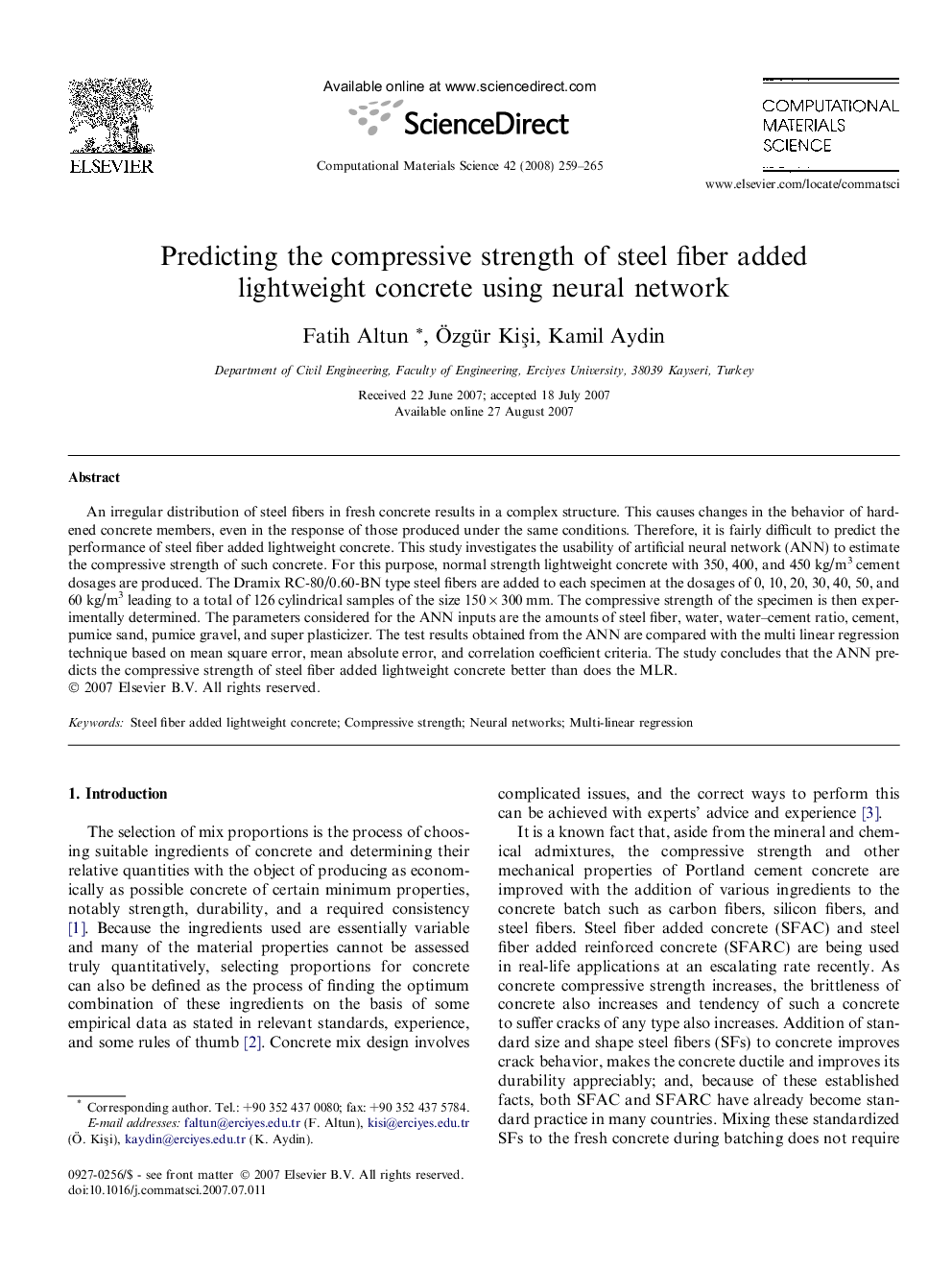| Article ID | Journal | Published Year | Pages | File Type |
|---|---|---|---|---|
| 1564122 | Computational Materials Science | 2008 | 7 Pages |
Abstract
An irregular distribution of steel fibers in fresh concrete results in a complex structure. This causes changes in the behavior of hardened concrete members, even in the response of those produced under the same conditions. Therefore, it is fairly difficult to predict the performance of steel fiber added lightweight concrete. This study investigates the usability of artificial neural network (ANN) to estimate the compressive strength of such concrete. For this purpose, normal strength lightweight concrete with 350, 400, and 450Â kg/m3 cement dosages are produced. The Dramix RC-80/0.60-BN type steel fibers are added to each specimen at the dosages of 0, 10, 20, 30, 40, 50, and 60Â kg/m3 leading to a total of 126 cylindrical samples of the size 150Â ÃÂ 300Â mm. The compressive strength of the specimen is then experimentally determined. The parameters considered for the ANN inputs are the amounts of steel fiber, water, water-cement ratio, cement, pumice sand, pumice gravel, and super plasticizer. The test results obtained from the ANN are compared with the multi linear regression technique based on mean square error, mean absolute error, and correlation coefficient criteria. The study concludes that the ANN predicts the compressive strength of steel fiber added lightweight concrete better than does the MLR.
Related Topics
Physical Sciences and Engineering
Engineering
Computational Mechanics
Authors
Fatih Altun, Ãzgür KiÅi, Kamil Aydin,
